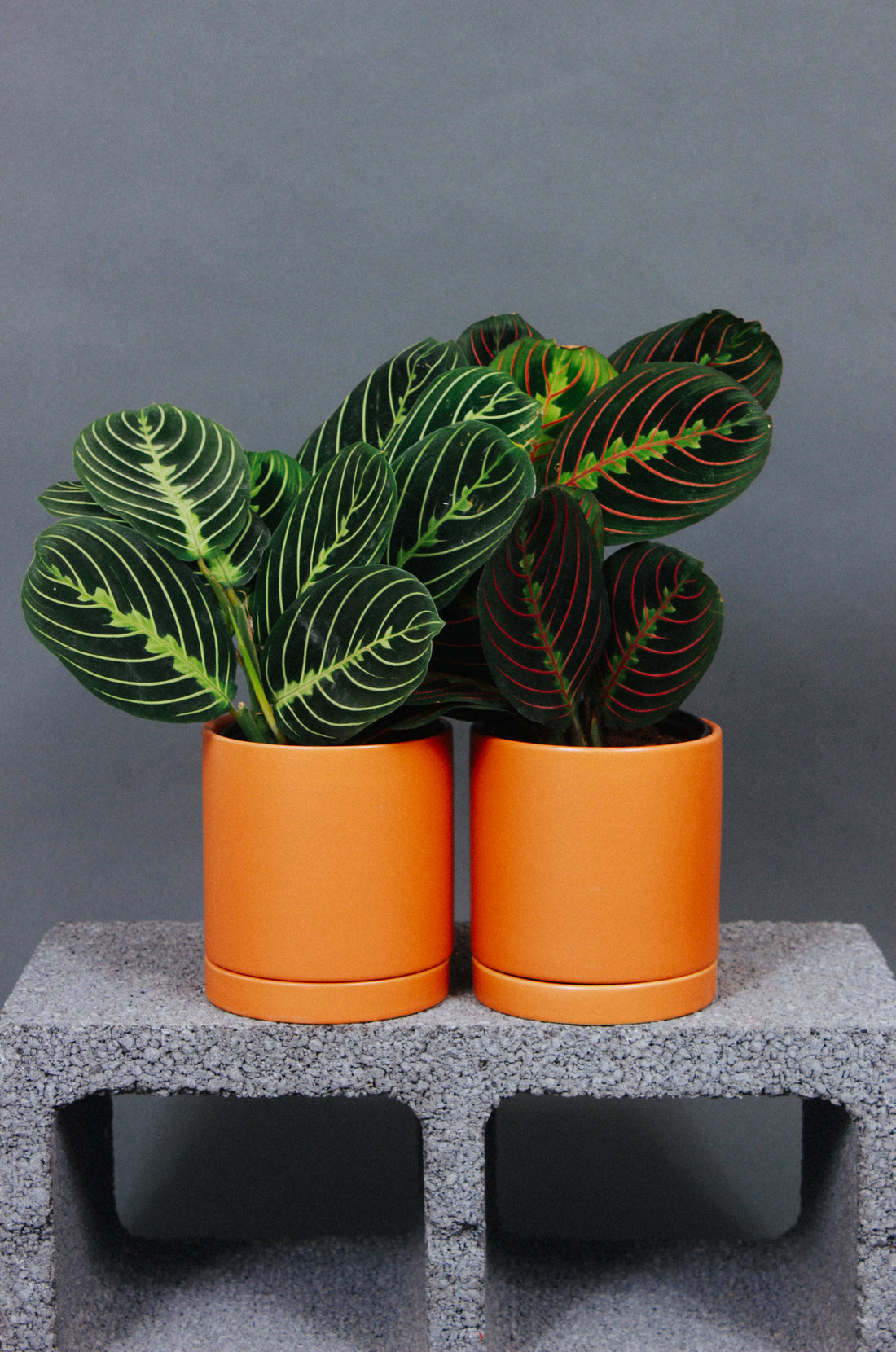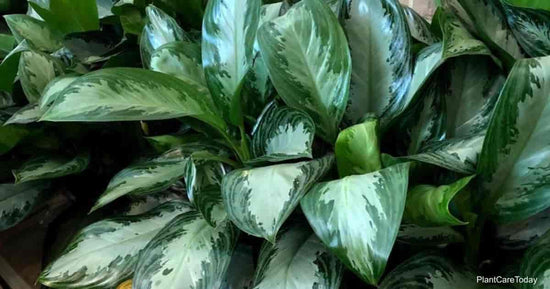Marantas, also known as Prayer Plants, are known for the way they are diverse and distinctly marked oval leaves fold themselves inward at night. The Red Maranta and Lemon Lime Marantas are both named after the bright pop of color seen in the leaf veins. Offering or welcoming one into your home is a symbol of gratitude. To ensure it's best health and happiness, we’ve got you covered with all you need to know to care for a Maranta at home.
Maintenance: Intermediate | Climate: Warm + Humid | Light: Medium or Bright + Indirect | Watering: Consistent | Pet Safe: Yes
From the tropical forests of Brazil, these plants are low growing, where they spread their leaves to absorb sunlight and moisture during the day, then folding themselves in once they’re in darkness. The key to caring for these indoors is to mimic the life of their natural environment as much as possible.
Marantas prefer medium or bright and indirect light. Harsh, direct light will scorch the leaves and cause them to lose their color. If a Maranta is not fully opening its leaves in response to daylight, the light it is in might be too low.
It is best to keep your Maranta in moist soil that is well draining. This requires consistent watering when the top 1-2 inches of soil have dried. In the Fall and Winter, gradually decrease the watering frequency in preparation for rest season.
Marantas are very sensitive to water quality. Tap water and cold water can both shock the plant. They do best with distilled, purified, or rain water that is room temperature or lukewarm. Avoid using tap water for a Maranta unless it has been left out overnight, allowing the harsh minerals to evaporate.
Air
Native to a tropical environment, a Maranta requires warm air between 65-85°, with high humidity levels. Most indoor air is too dry, especially when using A/C or heat.
Increase humidity around your Maranta by:
- Misting leaves with a spray bottle 3-4x per week.
- Placing a humidifier nearby.
- Creating a pebble tray with shallow water to place beneath the pot.
- Placing in a bathroom or kitchen with proper lighting, where the air tends to be more humid.
Soil
It is important for Marantas to be in soil that is both well draining and able to retain moisture. Soil mixed with peat moss, sand, and perlite will create an airy and moist environment for the roots to thrive. Marantas do well in shallow pots since their roots are not very deep.
Seasonal Care
Like all plants, Marantas go into rest during the Fall and Winter. To properly care for a Maranta during the Winter:
- Reduce the volume and frequency of waterings.
- Do not fertilize and avoid repotting. Check soil moisture with your finger to know if your plant is thirsty.
- Maintain high humidity levels to avoid stress and pests.
- Move your Maranta into brighter light to combat seasonal low light levels if needed.
- Avoid drafts.
Once Spring returns, the watering schedule can be increased again. Marantas will benefit from diluted fertilizer treatments every 2 weeks during the growing season.
Marantas can be propagated by placing stem cuttings into water or a soilless medium. They can also be propagated by dividing the plant into separate plants at the roots. We’ve got more on propagating houseplants here!
Maranta leaves are turning brown, dry, or curling
Brown tips and edges or dry, curling leaves on a Maranta are a sign of low moisture levels. Provide your Maranta with high humidity and ensure it is on a consistent watering schedule to keep the soil moist.
Maranta leaves are turning yellow
Yellow leaves on a Maranta are a sign of overwatering. Soil should be kept moist but not wet. Water when the top 1-2 inches of soil are dry and even less in the Winter. Overwatered plants can also be a sign of poor soil or pot drainage.
Maranta leaves are drooping
Droopy leaves on a Maranta are a common sign of underwatering. Ensure your Maranta is on a consistent watering schedule to keep the soil moist. Drooping leaves can also be a sign that other environmental needs are not being met, like warm air or high humidity. Marantas are sensitive to drafts and being moved, which can shock them and cause the leaves to droop.
Maranta leaves are developing small brown spots
Spots on Maranta leaves are often due to poor water quality. Marantas prefer distilled, spring, or rain water. Tap water should only be used after it has been left out overnight to allow harsh minerals to evaporate. Water should always be room temperature or lukewarm.
A fungal infection can also show as spots on leaves. One sign of leaf fungus is if a spot continues to grow on the leaf and spread across the plant fairly quickly. Treat leaf fungus with a repeated antifungal spray on the leaves.
Other Care Tips
- Maranta plants are non-toxic to pets and humans.
- Keep Marantas full and bushy by pruning back leaves in the Spring and Fall.
- Gently dust leaves regularly to maintain a glossy, vibrant appearance.
- While Marantas are tolerant of low and shaded light, they will grow faster in medium to bright light.
- Marantas are very sensitive plants. They prefer to be in a stable spot away from drafts. Following these care tips will keep them happy and healthy!
For specific Maranta care questions, we offer complimentary Office Hours with our Plant Specialist for all Grounded customers. We invite you to schedule a one-on-one Zoom call to ask any questions along your plant journey.





